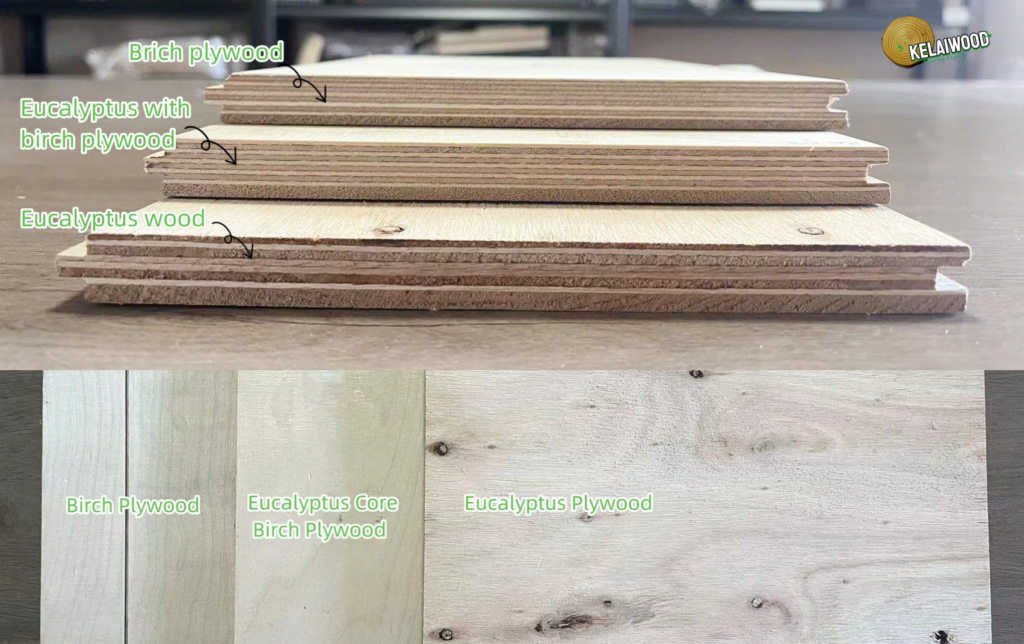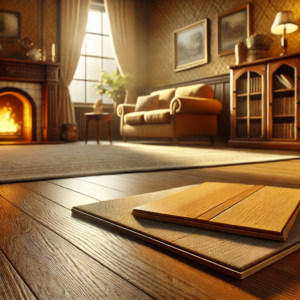Call Us
+8613735147015
What have you done to the back of the wooden floor?② Substrate

When you first look at a piece of wood flooring, the beautiful veneer on the surface catches your eye. Turning it over, you might see some knots or a smooth or nice grain on the back. There’s more to this than meets the eye. The substrate beneath the veneer is equally crucial. The substrate plays a decisive role in the flooring’s stability and durability. Kelaiwood specializes in multi-layer engineered wood flooring, offering substrates crafted from diverse materials like eucalyptus, birch, and eucalyptus-birch for varying needs and markets.

Eco-Friendly Standards
Based on the formaldehyde emission levels of plywood, it can be classified into E2, E1, E0, and CARB2 grades. E0 and CARB2 grade plywood have the lowest formaldehyde emissions and are the most environmentally friendly. Kelaiwood prioritizes environmental responsibility using Phenolic WBP E0 Glue, meeting CARB2 certification standards for minimal formaldehyde emissions. This commitment ensures compliance with stringent U.S. market regulations, promoting sustainability from production to installation.

Structural Stability Through Layered Design
Multi-layer substrates are strategically cross-grained, effectively releasing internal stresses and minimizing deformation risks. The choice of 6, 8, or 10 layers depends on flooring thickness, ensuring robust structural integrity across different applications.

Types and Characteristics of Substrates
All substrates are stable and environmentally friendly, but customers can choose the suitable substrate according to their market and customer base. Below is a brief introduction to the three types of wood flooring substrates:
All Birch
– **Characteristics**: Known for high density and uniform texture, providing exceptional strength and wear resistance.
– **Appearance**: Light-colored with fine, appealing grain patterns.
– **Suitability**: Ideal for premium markets due to its superior performance and aesthetic appeal.
Eucalyptus Core Birch Plywood
– **Characteristics**: Blends the lightweight properties of eucalyptus with the strength of birch, offering balanced performance.
– **Appearance**: Clear grain with a moderate color palette, combining aesthetics with practicality.
– **Suitability**: Suited for mid to high-end markets, providing cost-effective solutions without compromising quality.
All Eucalyptus
– **Characteristics**: Lightweight and economical, offering cost-effective options for budget-conscious consumers.
– **Appearance**: Darker tones with simpler grain patterns, suitable for entry-level and economical product lines.
Performance and Application
Each substrate type offers distinct advantages:
– **Birch**: Best suited for high-traffic areas due to its robust physical properties.
– **Eucalyptus Core Birch Plywood**: Balanced performance suitable for regular household use, blending aesthetics and durability effectively.
– **Eucalyptus**: Economical choice with adequate performance for residential settings, emphasizing affordability without sacrificing quality.
Cost Comparison
From a cost perspective: Birch > Eucalyptus Core Birch Plywood> Eucalyptus
When choosing wood flooring, beyond surface aesthetics, consider substrate selection for long-term stability, durability, and environmental impact. Kelaiwood’s commitment to quality ensures that every product meets stringent standards, providing customers with environmentally friendly, durable, and visually appealing flooring solutions tailored to diverse market needs.




